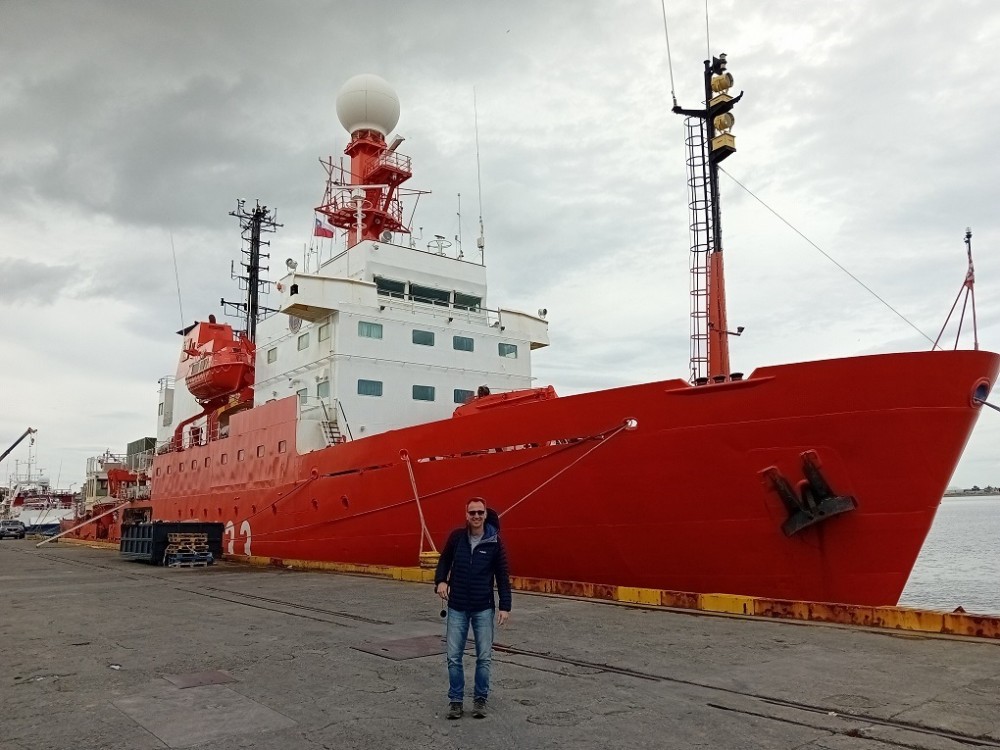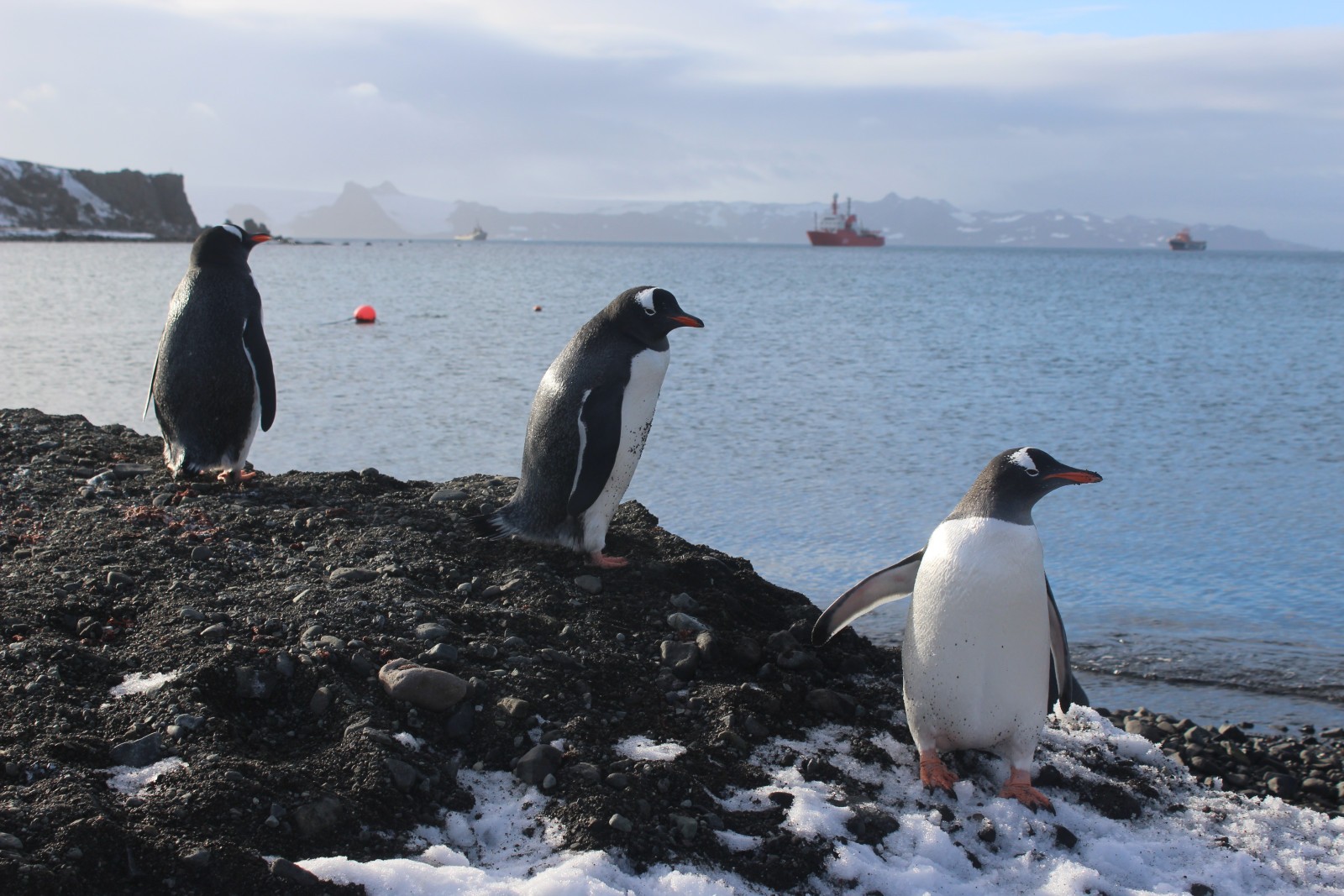A voyage on the Hesperides

It’s not every day that your job offers you the chance to journey to Antarctica aboard the R/V (research vessel) Hesperides. When I first heard about it five years ago upon joining the RAE (Receiver and Advance Equipment) division, it seemed like a distant, almost impossible dream. Yet, this year, what once felt like a distant possibility has become a reality. From late February to early April, I embarked on a mission as part of the IHM Galileo project. I call it a “mission”, but traveling to Antarctica is no ordinary mission, but then again GMV is no ordinary company.
In the NUSP (Navigation User Segment & PRS) / RAE (Receiver and Advance Equipment) division, we’ve dedicated several years to developing PRS receivers—a regulated service of Galileo designed to offer robust positioning in environments compromised by jamming (intentional interference) and spoofing (identity impersonation). Under the leadership of the Directorate General of Weapons and Material, coordinated by the IHM, GMV takes part in the IHM-Galileo project. Our objective is to assess the service’s performance in polar latitudes.
The preparations were brief. The daily grind of projects scarcely allowed me a moment to dwell on the upcoming journey, aside from attending to medical checks and administrative tasks with both the Spanish Polar Committee and the Navy. Days slipped by, and amidst a surreal feeling of disbelief, almost without my noticing, February 22nd arrived, and I found myself at the airport, bound for Punta Arenas, Chile.
Our time in Punta Arenas allowed us to forge some initial bonds of camaraderie with the team. This team consisted of a Commander and a Lieutenant Commander from the IHM, a Lieutenant Colonel from the DGAM, and an engineer from Cipherbit, our partner in receiver development. The wait was brief but felt much longer, particularly during the suspenseful half-hour wait for the results of a COVID test—so surprising yet so crucial; a positive result meant a trip back home!
In the afternoon, the moment arrived: passport control at the international dock and finally, the embarkation onto the Hesperides—undoubtedly, one of the most thrilling moments of the journey. Since Jorge Andreu (head of the RAE division) and Manuel Toledo (head of the NUSP unit), to whom I'd like to express my gratitude, informed me back in November 2023 that I would be part of the project, five months had passed filled with growing excitement, occasional surprises, and an overwhelming sense of anticipation. This sense of anticipation was finally being realized as the ship set course for the Patagonian Channels, crossing the Strait of Magellan en route to the South Shetland Islands.
Heading south, we began to catch sight of the first icebergs. Later, the approach to King George Island is truly impressive; we're nearing Antarctica, and I have to pinch myself to believe it. The icy landscape is utterly overwhelming, and there’s a palpable eagerness in the air to begin our work.
After a brief stop at the CSIC base “Juan Carlos I”, where part of the scientific team disembarked, on March 4th, we passed through Neptune’s Bellows and entered the caldera of Deception Island, where we disembarked at the Spanish Army base “Gabriel de Castilla”. The welcome was incredibly warm; I’d even say there was a sense of brotherhood in the air.
The days following our initial landing were bustling with activity. We made frequent trips ashore, collaborating with other projects also partaking in the campaign, mainly focused on geology, biology, and virology. A lot of work on land recording GNSS signals for subsequent processing on board, comparing our results with those obtained using commercial equipment.
At Half Moon Island, in Yankee Harbour, we had another one of the most spectacular moments of the trip: a landing amidst a colony of hundreds, if not thousands, of penguins. The wait until we were picked up felt endless, with rain and chilling cold. We return soaked and with frozen hands, but with the sense of a job well done.
The days passed by swiftly. One of the pieces of equipment we purchased for measurements was acting up. I felt the support from all my colleagues back in Madrid, who spared no time or effort in providing me assistance and ensuring the project’s success, quite literally.
On Deception Island, I encountered something unexpected: the presence of tourists at Whalers Bay. The debate is ongoing, but there are voices expressing concerns about the impact of increasing tourism activity, and it’s not unwarranted.
And every beginning has an end: on March 21st, after several cancellations, we boarded the plane that returned us to Punta Arenas. The takeoff from the dirt runway on King George Island was another memorable experience.
The mission concluded upon our return to Madrid. The Commander, Deputy Director of the IHM, nearing retirement, reminds us of something often said in the Navy: a month on a ship can forge friendships that last a lifetime, a truth he knows from experience.
To wrap up, I’ll leave something symbolic yet important here to shed light on the threats Antarctica is facing: a link to sponsor penguins. By sponsoring one, you pledge to support the conservation of Antarctica and its environment.
https://ejercito.defensa.gob.es/unidades/Antartica/antartica/apadrinamiento/index.html
I've already sponsored mine, his name is Galileo.

Author: Arturo Vinué Visús


